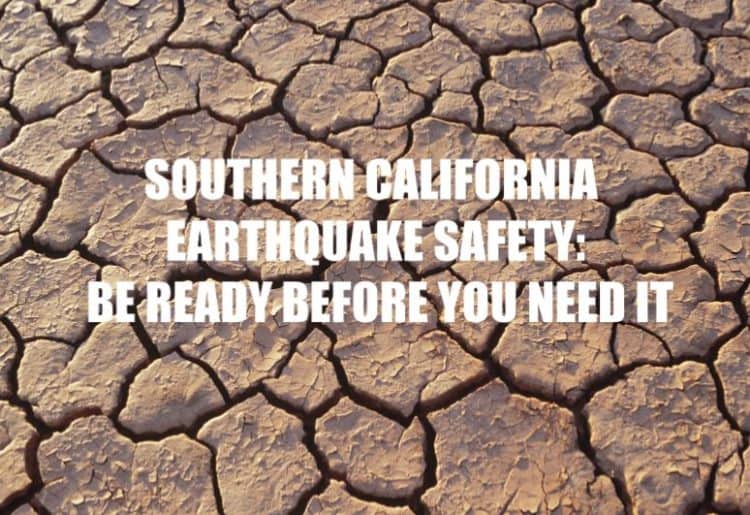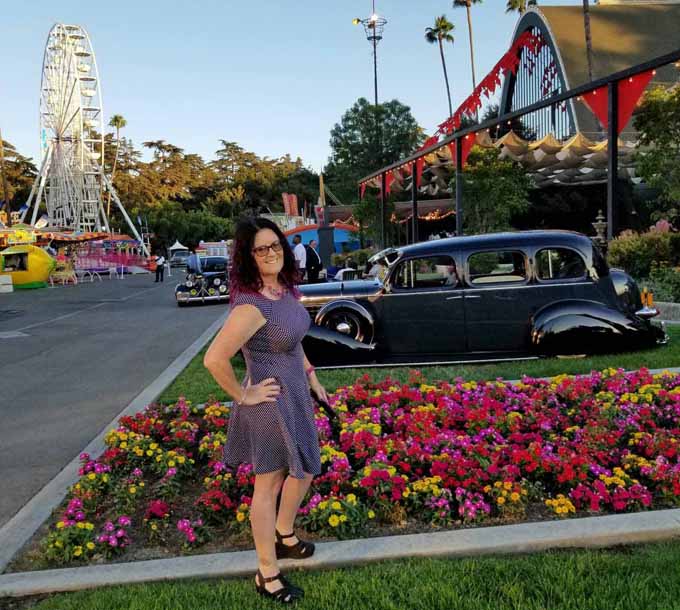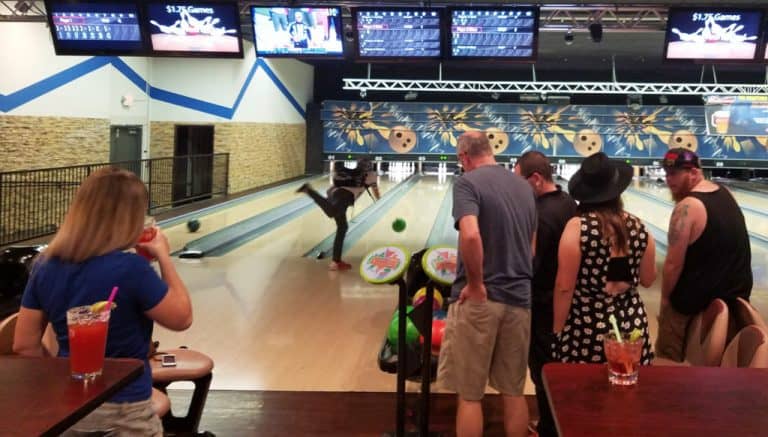Southern California Earthquake Safety and Readiness
If you’ve been watching the news at all — or if you’ve experienced them firsthand — you’ve aware of the Southern California earthquakes centered in Ridgecrest. First, there was a 6.4 on July 4th, followed by an even larger quake on July 5th, which turned out not to be an aftershock as the 6.4 was the preliminary quake, a precursor. Scary stuff when you start paying attention to the things that the USGS (United States Geological Survey) start sharing and learn that big quakes may not even be “the big one.” This means California earthquake safety is a big priority for any resident or visitor.
Living this Southern California lifestyle since I was 13, minus a few years we’d moved away due to the military or our three-year hiatus in South Carolina, I’ve experienced quite a few large quakes, with the biggest being Landers and Northridge. I was taught in middle school to duck and cover. Get under the nearest table or stand in a door jamb and ride it out. I knew all the rules, but in last night’s 7.1 earthquake, I forgot them. I mean, not just forget them but I did ALL the wrong things.
The earthquake hit as we were all sitting out back under the patio cover, a large new aluminum structure less than two years old, around a high-top table. Five of us on those high-top chairs, drinking cocktails and talking about my son’s visit to the emergency room and the incident of someone’s hubcap rolling away from an errant car at the hospital and damaging my Challenger. (I’m still teary.) Laughing, chatting and then boom, the drinks started sloshing, the patio heater started swaying and the table was moving side to side.
What the heck…wait, what’s happening…OMG IT’S ANOTHER EARTHQUAKE.
Reason went out the window. We didn’t get off the swaying chairs and get under the table…which was a good thing, in the big picture, as it’s glass. We also didn’t go stand in the door jamb. We also ignored the obvious of going inside.
What DID we do? Stand there. Nervously laugh. Watch each other sway. Watch the orange tree branches bouncing. Watch the hummingbird feeders swing wildly. Listen to car alarms going off. Watch my wine slosh. There were some curse words. What felt like forever later, it stopped. No damage at all, as at around 105 miles away from Ridgecrest, we’re too far for that, but we did learn later we’d almost lost a TV as it had crept to the edge of its shelf. A few bottles on our bar shelf had shifted to the edge. Otherwise, you couldn’t tell…except for our nerves. And we’re the lucky ones, without any injuries.
Up in Ridgecrest and Trona, they’re dealing with fires from broken gas lines, injuries from things falling onto people, cuts from broken glass and auto accidents when the power at intersections went out and the roads literally cracked in two. It’s insanely scary, and my heart goes out to those people.
Earthquake preparedness is one of those things we all think we know, but when the ground under your feet moves, it all leaves your head…and that’s bad, because the right decision can make or break how well you survive an earthquake.
So what DO you do?

Plan ahead. Read up on California earthquake safety and go through the steps with your kids.
Stay away from falling objects, both inside and out.
If you’re inside, head for a door jamb or if you can’t, under a sturdy table.
If you’re outside, get away from tall buildings, power lines and trees.
Have a known family contact that everyone calls. Put this in everyone’s phone AND have them memorize it and put it on their handwritten list. If cell services go down or land lines and you are all scattered, if you each call one out-of-state or out-of-area person, that person can help pass along messages and be a main hub for your family. This will help your college student across the country know you’re okay or help you and the spouse coordinate arrangements to meet or gather the rest of the family. Don’t forget to make sure this person knows about your California earthquake safety plan ahead of time!
Keep a small amount of lifesaving medications in a place where you can grab them in a hurry, as well as an envelope your most important documents, like passports, birth certificates, etc. Make sure the whole family knows where to find them.
If earthquakes have been happening, consider putting those things in a pile near an exit. Keep your purse there as well, so you can grab it if you have to leave.
If you live in an earthquake-prone area like California, consider a go bag in your car. Keep an extra outfit, sturdy shoes and a list of numbers as well as a spare phone charger. Since phone batteries can die if you’re not able to get to a power source, having that list of phone numbers in writing will help you have access to important contacts in the event you have to use someone else’s phone or a land line, if services are still available.
I’ve seen a lot of people talking about that go bag in their car, but it’s important to consider that in the event of a severe earthquake, you may not be able to drive your car. It could be under rubble, stuck in your garage, or the roads may be impassable. That go bag may be inaccessible.
Storing some bottled water and emergency food in your garage or a closet can help if your power or water supply goes out. If you can only store a little, it’s better than nothing! Earthquake preparedness isn’t all or nothing.
A flashlight next to your bed can be a literal lifesaver. Many injuries after an earthquake occur because people fall in the dark, trip over broken things or step on glass.
After a quake, do a careful inspection of your house but first, put on sturdy shoes. Check for gas leaks and fallen items, particularly broken glass. Open all your cabinet and closet doors very cautiously to see if anything has shifted. Put items back where they belong and take note of what you see that’s moved and is dangerous, to consider if you need to rearrange things permanently. Decor is awesome as long as it’s not dangerous.
Hardware stores sell straps to attach furniture, tvs, etc., to the wall. In California, we’re required to have straps on our water heaters, and they are well worth the expense and installation time.
Lastly, know where your valuables are, like the photos and other things that you can’t replace. Tell the family and keep a list since we tend to forget things when we’re stressed. Should something happen to your home, you can direct someone to get them out if you can’t. Just last month, I moved all of our digital phones since 2004, a monumental task, to a large portable hard drive. It’s easily accessible and may be the most important one item to take with us other than our documents and purses.
Follow USGS on Facebook, too, for current information and safety updates directly from the pros.
Southern California earthquake safety is much more inclusive and large than I can cover in one post, as we all have different situations and lifestyles, but in general, stay safe. Get your family together. Have your most important items accessible, but remember your lives are the most important thing of all.
For more information about disaster preparedness, check out my post on evacuation prep lists. After spending a few years on the southern east coast and much of my life in California, I’ve had to learn a lot about keeping my family safe so I’m sharing my tips that may help you, too!





